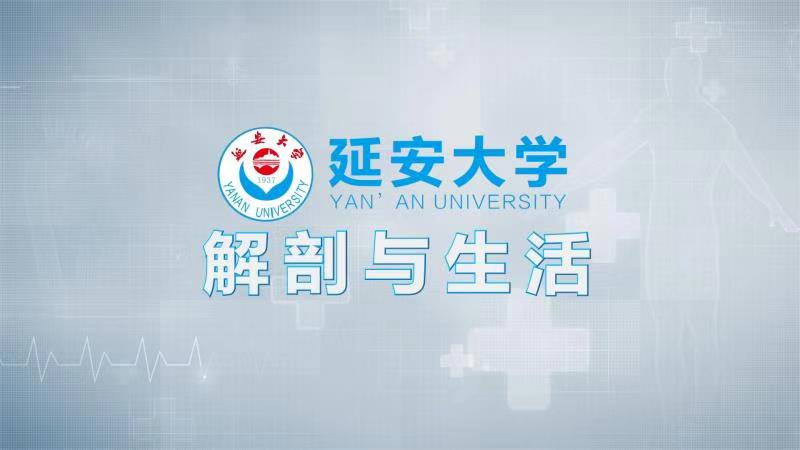
当前课程知识点:Production Engineering > Chapter 1 Introduction > 1.2 Flow in Production System > 1.2 Flow in Production System
返回《Production Engineering》慕课在线视频课程列表
返回《Production Engineering》慕课在线视频列表
同学们 大家好
本节我们学习油井生产系统中的流动问题
介绍油井的生产环节以及流动规律的特点
对于地层能量比较充足的情况之下
一般采用自喷生产的方式
这是一口典型的自喷生产系统
它由地层 垂直井筒 井口
以及地面的处理设备等部分组成
在这样一个自喷井的生产系统当中
包括四个基本的流动环节
首先就是地层之内的渗流也叫地层的向井流动
第二是在垂直井筒当中自下而上的垂直流动
第三是经过井口的油嘴的嘴内流动
还有就是在地面条件之下
地面水平管线之内的流动
如果地层的能量不充足了
我们一般采用的是
人工举升这样的一种生产方式
跟自喷井主要的区别就在于
在井筒中下入了举升设备
比如说各种的举升泵
那么在人工举升生产系统当中
同样的包含了四个方面的流动环节
所不同的就是在垂直井筒之内
因为有泵的存在
分为了泵下和泵上两个流动环节
无论是自喷井 还是人工举升井
油井的生产系统都有如下的几个特点
首先它就是存在四个相互衔接的流动环节
相互的衔接 意味着每个环节上首尾相连
同时这些相连表现出来的特点
就是存在质量守恒和压力的接续
所谓的质量守恒指的就是
在各个环节中质量是守恒的压力的衔接和接续
在各个环节中质量是守恒的压力的衔接和接续
意味着在一个环节的末端压力
比如渗流环节的末端压力
是第二个环节 垂直流动环节的起始端的压力
由这样一个压力把两个环节衔接在了一起
同时我们经过每个环节的流动是存在能量损失
也就意味着在每个环节当中
它的流动总是由高压端流向低压端
了解了这样的一些流动的特点
同学们可能会有这样的问题 油井能不能自喷
油井在自喷之后何时停喷呢
类似的问题还有 补充多少能量可以使得
不能自喷的井正常的生产起来呢
如果要回答这样一些问题
就需要对我们四个不同流动环节之间的
流动规律进行研究所谓的流动规律
也就是油井生产系统中的流动规律
它指的主要就是在每个环节上的
压力和流量之间的关系
如果我们明确了压力和流量之间的关系
我们就可以确定出以特定的流量
流过当前环节的时候它的压力损失是多少
那么知道了压力损失 我们就可以
计算出流入下一个环节的起始端的压力
如何得到这个呢 就是通过压力损失
计算出当前环节的末端压力
也就意味着是流入下一个环节的起始端压力
那么知道了起始端压力
我们就可以判断在这个压力之下
能不能保证在下一个环节中是正常流动的
通过以上的分析
我们知道流动规律的确定是非常重要的
我们来举一个例子
对于第一个流动环节也就是地层的渗流环节
储层的流体向井流动的过程当中
以一个产量Q流动流到井底的时候
剩余了压力PWF根据渗流力学的知识我们知道
流向井筒的产量越高 流经地层的阻力越大
那么剩余到井底的流压就越低
所以井底的流压跟产量之间的关系
是一个递减的关系那么这个递减
是一个线性的还是非线性的
是什么样的一个非线性的递减关系呢
这是我们需要研究的
另外对于垂直井筒的流动来说
地层的井底流压和流过垂直井筒的流量之间
是一个什么样的关系呢
我们知道在井筒当中流过的流体流量越大
就意味着它克服的阻力就越大
如果我们确定井口的压力作为一个限定条件
那么需要的井底流压就要越高 同样
我们画出井底流压跟产量之间的一个对应关系
我们可以知道它是一个递增的关系
那么这种递增的关系
同学们可能说我们在流体力学里面已经学过了
实际上在油井当中的流动
就像这段录像里面给出来的一样
它是一个气液两相的流动状态
气相液相的比例不同 流经井筒的时候
流动的结构 流动的形态就不相同
那么它的流动规律自然的也就不一样
所以说在油井的生产系统当中
它是一个典型的多相流动的状态
是区别于我们以前学过的
流体力学里面单相流动的状态
在以后的章节里面 我们会分别的
对于四个流动环节的流动规律进行讲解
本节就讲到这
同学们再见
-1.1 Main Tasks of Production Engineering
--1.1 Main Tasks of Production Engineering
-1.2 Flow in Production System
--1.2 Flow in Production System
-Problems
--Chapter 1 - Problems
-2.1 IPR Curve and Well Productivity
--2.1.1 Single-Phase Oil Inflow Performance Relationships
-2.2 Vogel's IPR and Applications
--2.2.2 Determination of IPR Curves Using Vogel's Equation
--2.2.3 Skin Factor and Flow Efficiency
--2.2.4 Extension of Vogel's Equation for Non-Complete Wells
--2.2.5 Combination Single-Phase Liquid and Two-Phase Flow
-Problems
--Chapter 2--Problems
-3.1 Two-Phase Flow in Wellbore
--3.1.1 Flow Regimes in Vertical Flow
-3.2 Two-Phase Vertical Flow Pressure Gradient Models
--3.2.1 Two-Phase Pressure Gradient Equations
--3.2.2 Predicting Gas-Liquid Flow Regimes Using the Okiszewski Correlation
--3.2.3 Pressure Gradient Calculation Using the Okiszewski Correlation
-3.3 Vertical Lift Performance
--3.3 Vertical Lift Performance
-Problems
--Chapter 3--Problems
-4.1 Nodal Analysis Approach
--4.1.2 Solution Node at Bottom of Well
--4.1.3 Solution Node at Wellhead
-4.2 Flow through Chokes
--4.2.2 Solution Node at Choke
-Problems
--Chapter 4--Problems
-5.1 Principles of Gas Lift
--5.1.2 Initial Kick-off of Gas Lift
-5.2 Gas Lift Valves and Gas Lift Completions
-5.3 Gas Lift Design
--5.3.1 Gas Lift Design for Specific Production Rate
--5.3.2 Gas Lift Design for Specific Injection Rate
--5.3.3 Kick-off Procedure with Unloading Valves
--5.3.4 Design Depths of Unloading Valves
-Problems
--Chapter 5--Problems
-6.1 Introduction of Surface and Downhole Equipment
-6.2 Operating Principle of Sucker Rod Pumps
-6.3 Pumping Unit Kinematics
--6.3.1 Motion of Polished Rod-Simple Harmonic Motion
--6.3.2 Motion of Polished Rod-Crank and Pitman Motion
-6.4 Polished Rod Load
--6.4.3 Peak Polished Rod Load and Minimum Polished Rod Load
-Problems
--Problems for chapter 6: Sucker Rod pumping I
-6.5 Calculation of Counterbalancing, Torque and Power
--6.5.1 Balance of Pumping Unit
--6.5.2 Counterbalancing Calculation
--6.5.3 Torque and Torque Factor
-6.6 Volumetric Efficiency of Pump
--6.6.2 Gas Effect on Pump Performance
--6.6.3 Measures of Enhancing Pump Volumetric Efficiency
-6.7 Design of Pumping System
--6.7.1 Strength Calculation and Design of Sucker Rod Strings
--6.7.2 Design Procedures of Pumping System
-6.8 Analysis of Sucker Rod Pumping Well Conditions
--6.8.1 Acoustic Surveys and Analysis of Annular Liquid Levels
--6.8.2 Introduction of Dynamometer Card
--6.8.3 Typical Dynamometer Cards
-Problems
--Problems: Chapter 6: Sucker Rod Pumping (II)
-7.1 Water Injection System
--7.1.1 Water Resources and Water Treatment
--7.1.2 Introduction of Water Injection System
-7.2 Injectivity Analysis
--7.2.1 Injectivity and Injectivity Index Curves
-7.3 Injection Tubing String
--7.3 Introduction of Injection Tubing Strings
-7.4 Analysis and Application of Injectivity Index Curves
--7.4.1 Analysis of Injectivity Index Curves
--7.4.2 Injection Choke Deployment
-Problems
--Chapter 7--Problems
-8.0 Introduction
-8.1 The Fracturing of Reservoir Rock
--8.1.1 Basic Rock Mechanics Parameters
--8.1.4 Fracture Initiation Conditions
-Problems
--Chapter 8(I)--Problems
-8.2 Fracturing Fluids
--8.2.2 Fluid-Loss Properties of Fracturing Fluids
--8.2.3 Rheological Properties of Fracturing Fluids
-8.3 Proppants
-8.4 Hydraulic Fracturing Design
--8.4.1 Productivity Index of Hydraulic Fracturing Wells
--8.4.2 Fracture Geometry Models
--8.4.3 Design Procedure for Hydraulic Fracturing
-Problems
--Chapter 8(II)--Problems
-9.0 Introduction
-9.1 Carbonate Acidizing
--9.1.1 Mechanism of Carbonate Acidizing
--9.1.2 Effect Factors of Reaction Rate
--9.1.4 Effective Distance of Live Acid
-9.2 Sandstone Acidizing
--9.2.1 Mechanism of Sandstone Acidizing
--9.2.2 Mud Acid Treatment Design
-9.3 Acidizing Treatment Technologies
--9.3.2 Acidizing Treatment Operations
-Problems
--Chapter 9--Problems
-Final Exam

